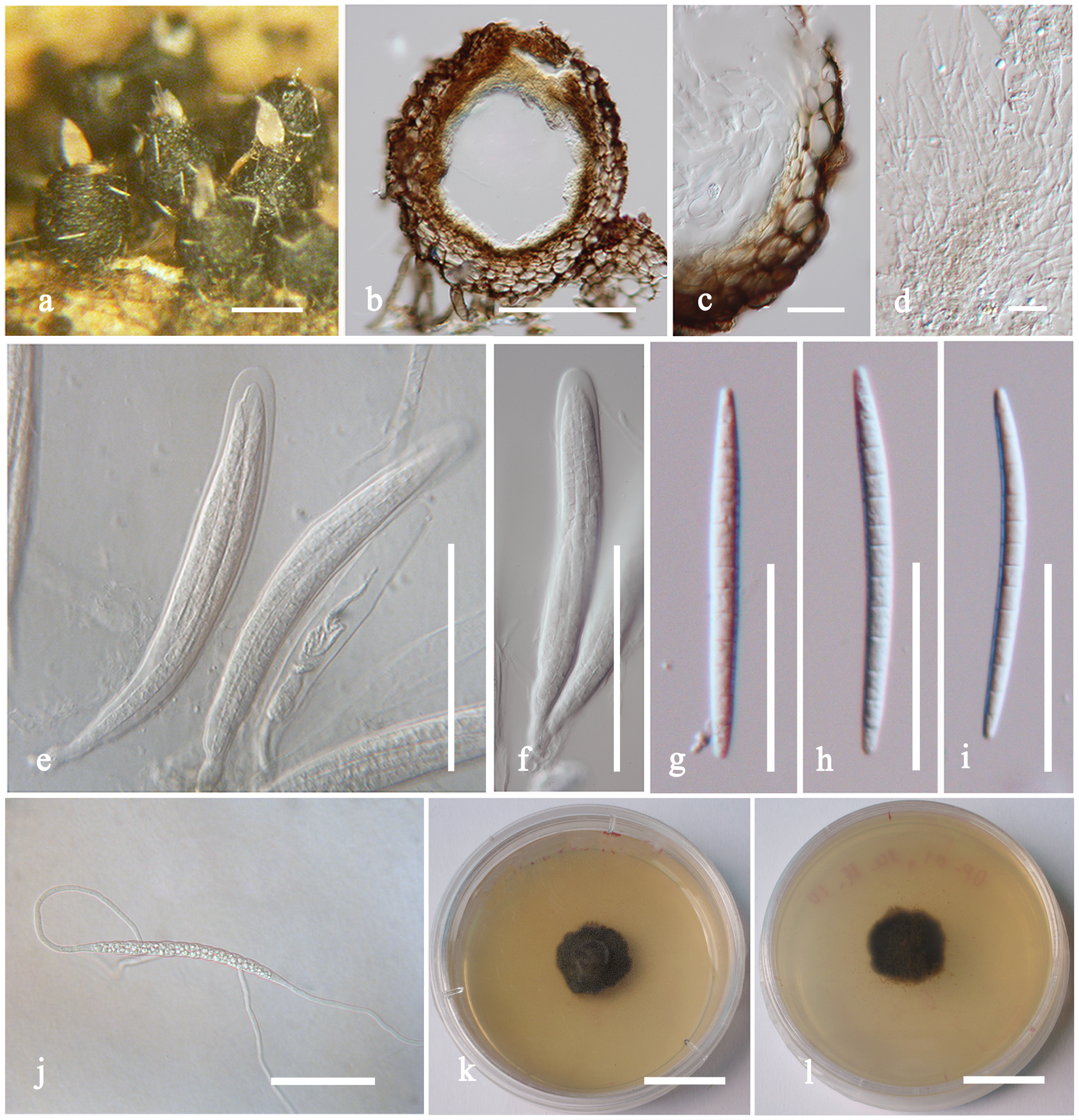Helicoma chiangraiense Boonmee & K.D. Hyde, sp. nov.,MycoBank: MB 804558.
Etymology: In reference to its occurrence in Chiangrai, Thailand.
Holotype: MFLU10–0048
Saprobicon dead wood. Sexual state:Ascomata (183-)240–285 µm high × (189-)241–296µmdiam. ( = 242.5 × 254 µm), superficial,solitary, scattered, subglobose, ellipsoidal-ovate, with few hyphae developing from ascomatal base on substrate, dark brown to black, velvety, ostiolate. Peridium 28–34 µm wide, comprising 3-4 layers, composed of cells of textura angularis, with inner cells brown and outer cells dark brown. Hamathecium comprising ca. 0.5–1 µm wide, numerous, filiform, hyaline pseudoparaphyses. Asci (146-)153–179.5 × 18–23(-26) µm (= 163.5 × 21 µm, n = 20), 8-spored, bitunicate, cylindrical, apicallythickened and rounded, with a 14.5–24 µm long pedicel. Ascospores (63-)72–93.5 × 5–7.5 µm (= 81 × 6 µm, n = 20), overlappingfasciculate, cylindric-fusiform, with tapering and rounded ends, straight to slightly curved, 11–13-septate, not constricted at septa, hyaline, smooth-walled. Asexual state: Unknown.
Cultural characteristics: Ascospores germinating on MEA within 12 h and germ tubes produced at both ends. Colonies growing slowly on MEA, reaching less than 5 mm in 7 days at 28C, effuse, velvety, with a convex surface, with dark continuous margin, asexual spores not formed within 60 days.
Material examined: THAILAND, Chiang Rai, Muang, Doi Pui, elev. ca. 403–936 msl., on dead wood of Fagaceae, 15 August 2009, Saranyaphat Boonmee, DP-01 (MFLU 10–0048 holotype; PDD 104455 isotype); ex-type living culture = MFLUCC 10–0115 = BCC 39624, 39625 = IFRD 2195 = ICMP 20068.
Notes: Helicoma chiangraiense differs from other speciesof Helicoma in having a sexual morph of dark brown to black, shiny, non setose ascomata with distinct ostioles (Fig. 19a). Helicoma chiangraiense groups with the Helicomasensu stricto (Clade A, Fig. 2) with high support (92% BS and 0.98 PP).
Fig. 1 Helicomachiangraiense (MFLU10–0048, holotype). a Superficial ascomata on substrate. White oozing mass of ascospores at apex of ascomata. b L.S. of ascoma. c. C.S. of peridium. d Pseudoparaphyses embedded in a mucilaginous matrix. e, f Asci. g-i Ascospores. j Germinating ascospore. k, l Colonies on MEA from surface and reverse, colonies dark brown. Scale bars: a-b, e-f=100µm, c=20µm, d=5µm, g-j=50µm, k-l=10mm

